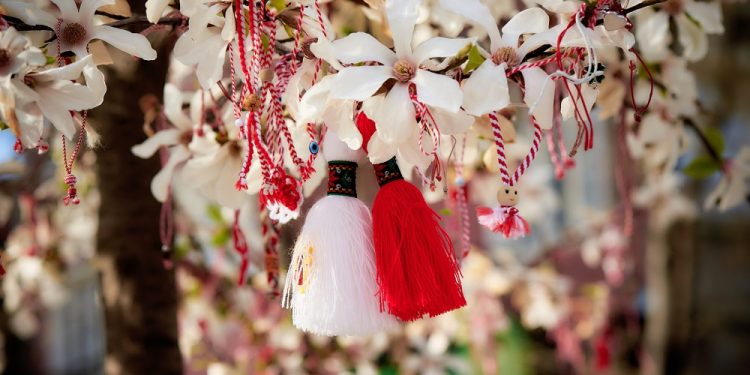
Martisor
Mărțișor is a holiday that is celebrated all over Romania and in territories that are usually inhabited by Romanians. This holiday and spring festival is celebrated on the 1st of March. The name of this holiday comes from the word Marț – the diminutive form of an old Romanian folk name for March.
Therefore, the proper translation of this holiday is “Little March.” Starting on this day and continuing until March 8th, it is traditional for men to offer women a trinket called a Mărțișor. Women then wear this trinket throughout the month of March – and it’s believed that it will bring them improved strength and health all year long.
Modern observances of this holiday, especially in cities and other urban areas, don’t place emphasis on the Mărțișor as a talisman. Nowadays, it’s seen more as a symbol of appreciation, friendship, love, and respect.
The black threads that were once used in the Mărțișor have since been replaced by red ones, and these talismans are more popular than ever before. However, some of the more superstitious Romanians who celebrate this day still make their talismans with black threads as a way to ward off evil spirits.
The History of Mărțișor
While it isn’t known exactly when this holiday originated, it is believed to have been of Roman origin. That’s because, in ancient Rome, New Year’s Eve was originally celebrated on the 1st of March before it was changed on the Julian calendar.
During this month, which was called “Martius” in honor of the Roman god Mars, citizens would wear red and white colors – which were not only the colors of Mars but were also the colors of peace and war.
For many years in Romania, women would receive gold or silver trinkets on a red and white ribbon, an evolution of the “Martius colors,” which would become the Mărțișor tradition in modern times.
Some Fun Facts About Mărțișor
Anyone looking for a little bit more information on Mărțișor and the traditions associated with it has come to the right place. We’ve gathered some of the little-known facts about this holiday and its traditions and have placed them below for our readers’ immediate consumption. Enjoy.
- Mărțișor dates back at least 8,000 years to agricultural rituals of the time.
- A Thracian people called the Dacians wore Mărțișor made of red and white stones.
- In Bulgaria, this celebration is often called Martenitsa.
- In Bulgaria, even farm animals receive a Mărțișor.
Mărțișor Customs, Traditions & Celebrations
Mărțișor is now celebrated by buying red & white silky threads which have been tied into a bow and then attaching a trinket of some sort to them. It is then given to female family members, co-workers, and friends.
This is done to show them the value of their friendship and/or that the male respects or admires them. Women will then wear it throughout the month of March. When the month is over, some women will remove the trinket and then tie the string to a tree – usually a fig tree.








